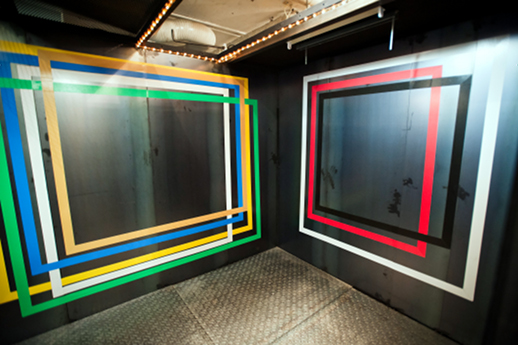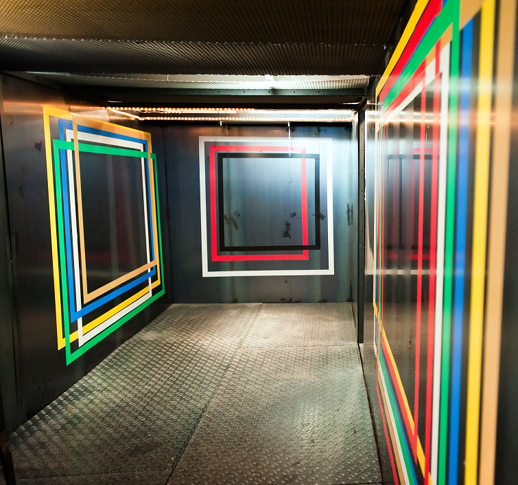The “Aha!” Moment
According to the Renaissance architect and artist Leon Battista Alberti a painting was “a transparent window through which we look out into a section of the visible world”. This concept has stood true not only during Alberti’s times but for centuries and, to some extent, is relevant even now. People peer into square or rectangular canvases to experience the realm of beauty, a fantasy landscape decked in brilliant fauna and flora where mythical figures expose their polished physiques. Paintings are meant to become portals through which we access an alternate universe. The painted canvas, framed and mounted on a museum or gallery wall, is separated and emphasized for the viewer’s special attention. While one might argue that the relationship between paintings and their environment, or the binary concept of inside/outside is a philosophical debate chewed dry, most notably by Kant and Derrida, this century-old argument is given a fresh (and refreshing) spin in LG Williams/Estate of LG Williams’s current exhibition at The Container. What do you do when confronted with a frame, not just one but several, pasted directly on to the wall with nothing to look inside them?
The venue itself needs some explanation: The Container is, as is correctly named, a shipping container. It sits in a fashionable hair salon in Nakameguro, silently housing of-the-moment contemporary artworks while people cut or perm their hair not even a meter away. As could be imagined, the space is not big, or as Shai Ohayon, the curator, puts it: “As small as it could get.” This unconventional site with black painted walls will hold four site-specific installations each year, LG Williams’s being the second after the inaugural show of Jack McLean’s “Salt Mine”.

Williams could be best described as a conceptual artist, known for his witty and intellectually fulfilling works. He has long been a favorite of critics and the art-savvy, earning him a place in this year’s Venice Biennale. An artist-philosopher, Williams incorporates varying themes like politics, gender, history, and mathematics. He likes to play with his viewers’ perception as he does in “Anything But”, prompting them to question the nature of the relationship between what they see and what is really out there.
One peers through the little opening of the shipping container and is immediately confronted by a square of red, white, and black. There are three pieces inside the container, each work a square on square on square of masking tape applied directly onto the walls. The squares intertwine and converge, moving and shaking the walls, almost giving one the sense of vertigo. Referring back to the earlier debate of frames and paintings, Williams’ work defies the separation between work and frame or interior and exterior. His tapes are at once frames and the work the frames are supposed to contain: they are the center and periphery, defining themselves on their own. The traditional debate stops by questioning the binary framework of analysis — not Williams however. His squares are almost predatory; they invade and encroach, claiming and thus dominating their environment, The Container. In essence, the debate of outside/inside no longer exists as the works become part of the environment, or rather: the environment becomes part of the works. The frames then dissect square chunks of black wall, forcing us, trained viewers that we are, to look at void space — another point won by the artist.

Frames are not only for paintings — you can have one of the mind, of reference, or can even be framed. In essence, people easily find themselves within designated safe zones. We are quick to define our boundaries, believing them with little question or proof: “Everybody else seems to think or do that, so why not I?” LG Williams/Estate of LG Williams’ “Anything But” questions this very notion, challenging you to reconsider what you thought was so. His exhibit is anything but what we want. None of us like ambiguities, non-binary ideologies that easily degenerate into chaos and headaches. But as you let the hair stylist snip at your over-grown hair next to The Container, your “Aha!” moment may come, and then you will smile, and know.
Chisako Izuhara
Chisako Izuhara



